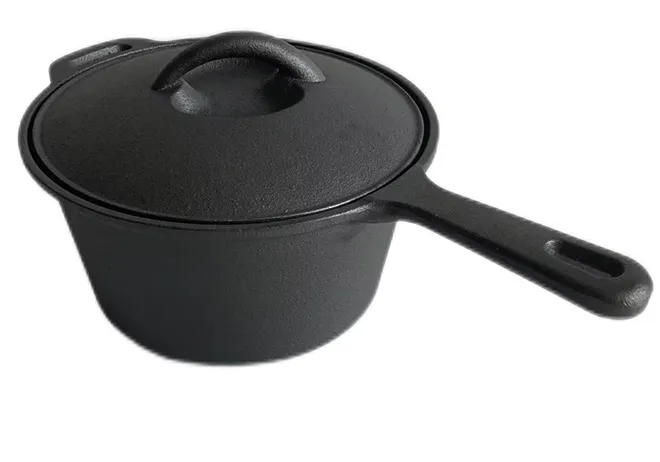
What Materials Are Used in a Classic Dutch Oven's Construction
The Traditional Dutch Oven Materials and Craftsmanship
The traditional Dutch oven has long been a staple in kitchens around the world, known for its versatility, durability, and ability to create delicious meals. But what exactly is a Dutch oven made of? Understanding the materials used in its construction can enhance your appreciation for this culinary workhorse and guide you in selecting the right one for your cooking needs.
Cast Iron The Classic Choice
The most iconic Dutch ovens are made from cast iron, a material that has been used for centuries. Cast iron is renowned for its excellent heat retention and distribution, allowing for uniform cooking. The material can withstand high temperatures, making it ideal for baking, roasting, and simmering. When preheated, a cast iron Dutch oven can maintain its temperature longer than other materials, making it perfect for slow-cooking and braising.
One of the key attributes of cast iron is its ability to develop a nonstick surface when seasoned properly. Seasoning involves applying a layer of oil and heating the pot, which creates a protective coating that enhances its cooking performance. This not only helps in preventing food from sticking but also adds flavor to dishes over time.
Enameled Cast Iron A Modern Twist
While traditional cast iron Dutch ovens require seasoning, many modern versions come with an enamel coating. Enameled cast iron combines the heat retention properties of cast iron with a smooth, easy-to-clean surface. The enamel is glaze that prevents rusting and eliminates the need for seasoning, making these Dutch ovens easier to maintain. Additionally, the enamel is available in a variety of colors, allowing for aesthetic appeal in serving dishes directly from the oven to the table.
Enameled Dutch ovens can be slightly less durable than their uncoated counterparts since the enamel can chip or crack if mishandled. However, they are favored for their convenience and versatility, as they can be used for both stovetop and oven cooking.
a traditional dutch oven is made of what material

Aluminum and Other Materials
While cast iron reigns supreme, there are also Dutch ovens made from materials like aluminum and ceramic. Aluminum Dutch ovens are lighter and heat up more quickly than cast iron. They often feature a nonstick coating, which makes cooking and cleanup simpler. However, aluminum does not retain heat as well as cast iron, and it might not achieve the same level of browning or crusting in baked foods.
Ceramic Dutch ovens, often found in more decorative models, are excellent for slow cooking and are typically oven-safe. They provide even heating and a beautiful presentation for serving. However, they tend to be less versatile as they are not typically used on the stovetop and can be prone to cracking if subjected to sudden temperature changes.
Choosing the Right Material for Your Needs
When deciding on a Dutch oven, consider your cooking habits and preferences. If you enjoy slow cooking, braising, and making hearty stews, a cast iron or enameled cast iron Dutch oven would be ideal. These materials excel in retentiveness and distribute heat evenly, resulting in tender, flavorful dishes.
For those who seek a lighter option that heats up quickly and is easier to handle, an aluminum Dutch oven may be the right choice. However, keep in mind that you might have to adjust cooking times and methods because of the differences in heat retention.
Conclusion
In summary, the traditional Dutch oven is primarily made from cast iron, known for its durability and exceptional heat retention. Enameled versions provide the same benefits while being easier to clean and maintain. Other materials such as aluminum and ceramic offer alternatives but come with their own set of advantages and limitations. Understanding these materials will not only help you make an informed choice but will also deepen your culinary experience, allowing you to cook a variety of delicious dishes with confidence. Whether you are simmering, roasting, or baking, a Dutch oven is a versatile companion in your kitchen, no matter the material it is made from.
-
Season Cast Iron Perfectly with GPT-4 Turbo TipsNewsAug.01,2025
-
High Quality Cast Iron Cookware - Baixiang County Zhongda MachineryNewsAug.01,2025
-
Premium Cast Iron Pan: Durable & Perfect HeatNewsAug.01,2025
-
High Quality Kitchen Durable Black Round Cast Iron Cookware Pancake Crepe Pan-Baixiang County Zhongda Machinery Manufacturing Co., Ltd.NewsAug.01,2025
-
Cast Iron Cookware - Baixiang County Zhongda Machinery | Nonstick, Heat ResistanceNewsAug.01,2025
-
High Quality Kitchen Durable Black Round Cast Iron Cookware - Baixiang County Zhongda Machinery | Non-Stick, Heat Retention, DurableNewsJul.31,2025


